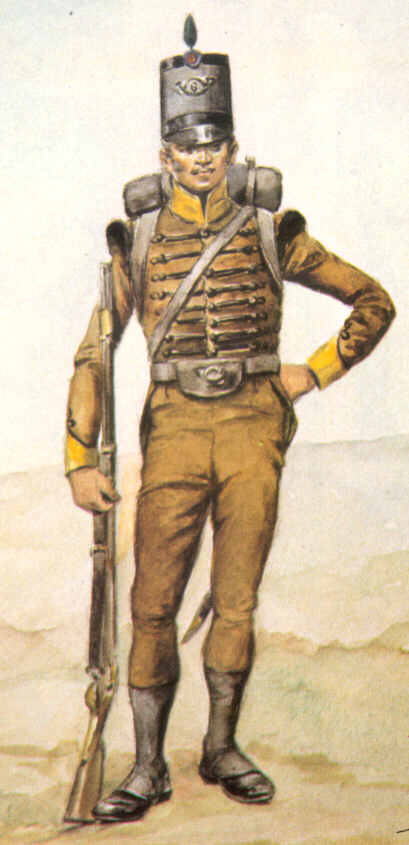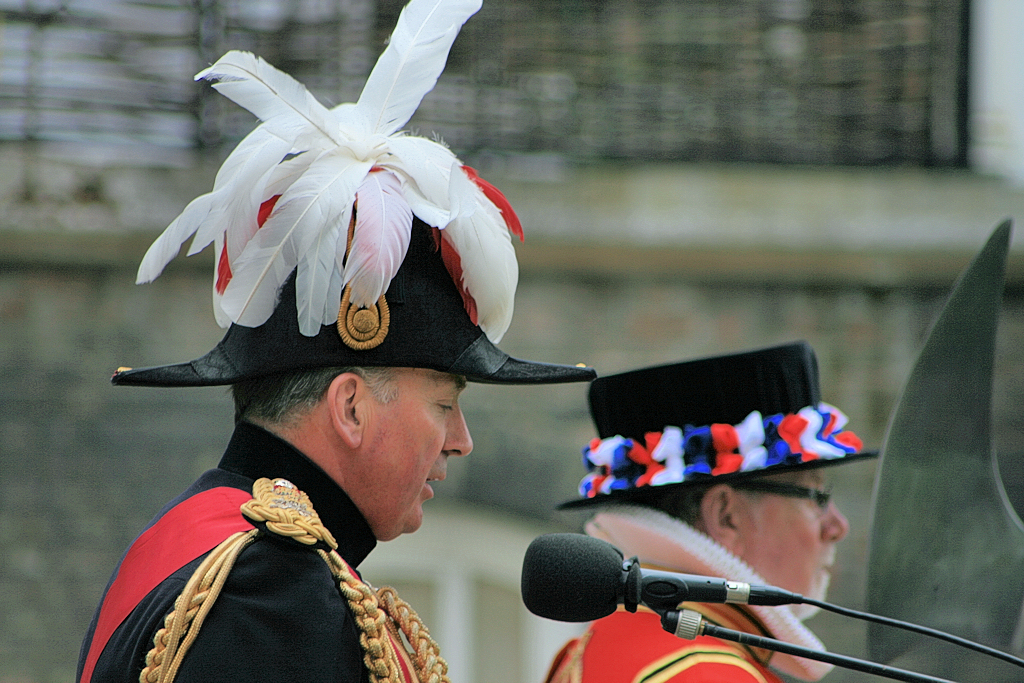|
Voltigeurs
The Voltigeurs were French military skirmish units created in 1804 by Emperor of the French, Emperor Napoleon I of France, Napoleon I. They replaced the second company of fusiliers in each existing infantry battalion. The voltigeurs moniker later saw use with other militaries. Etymology ''Voltigeurs'' (English: "vaulters") were named after their originally conceived mode of operation: although they were foot soldiers, on the battlefield they were intended to jump onto the Rump (animal), croup of cavalry horses to advance more quickly. This proved unworkable and they were trained to be elite skirmishers, but they retained their original name. ''Voltigeurs'' formed an integral part of the Grande Armée's basic building blocks, the line and light infantry battalions. Line and light infantry voltigeurs In 1804, each French Line infantry, Line (Ligne) and light infantry, Light (Légère) infantry battalion was ordered to create one company of ninety of the best shots who would serve ... [...More Info...] [...Related Items...] OR: [Wikipedia] [Google] [Baidu] |
Grande Armée
The (; ) was the primary field army of the French Imperial Army (1804–1815), French Imperial Army during the Napoleonic Wars. Commanded by Napoleon, from 1804 to 1808 it won a series of military victories that allowed the First French Empire to exercise unprecedented control over most of Europe. Widely acknowledged to be one of the greatest fighting forces ever assembled, it suffered catastrophic losses during the disastrous French invasion of Russia, after which it never recovered its strategic superiority and ended its military career with a total defeat during the Hundred Days in 1815. The ''Grande Armée'' was formed in 1804 from the Army of the Coasts of the Ocean (1804), Army of the Coasts of the Ocean, a field army of over 100,000 men assembled for Napoleon's planned invasion of the United Kingdom. He subsequently led the field army to Central Europe and defeated Austrian Empire, Austrian and Russian Empire, Russian forces as part of the War of the Third Coalition. T ... [...More Info...] [...Related Items...] OR: [Wikipedia] [Google] [Baidu] |
Line Infantry
Line infantry was the type of infantry that formed the bulk of most European land armies from the mid-17th century to the mid-19th century. Maurice of Nassau and Gustavus Adolphus are generally regarded as its pioneers, while Henri de la Tour d'Auvergne, Vicomte de Turenne, Turenne and Raimondo Montecuccoli, Montecuccoli are closely associated with the post-1648 development of linear infantry tactics. For both battle and parade drill, it consisted of two to four ranks of foot soldiers drawn up side by side in rigid alignment, and thereby maximizing the effect of their firepower. By extension, the term came to be applied to the regular regiments "of the line" as opposed to light infantry, skirmishers, militia, Combat service support, support personnel, plus some other special categories of infantry not focused on heavy front line combat. Linear tactics and function Line infantry mainly used three formations in its battles: the line, the square, and the column. With the univer ... [...More Info...] [...Related Items...] OR: [Wikipedia] [Google] [Baidu] |
Light Infantry
Light infantry refers to certain types of lightly equipped infantry throughout history. They have a more mobile or fluid function than other types of infantry, such as heavy infantry or line infantry. Historically, light infantry often fought as Reconnaissance, scouts, Raid (military), raiders, and skirmishers. These are loose formations that fight ahead of the main army to harass, delay, disrupt supply lines, engage the enemy's own skirmishing forces, and generally "soften up" an enemy before the main battle. Light infantrymen were also often responsible for Screening (tactical), screening the main body of a military formation. Following World War II, the term "light infantry" has evolved to include rapid-deployment units (including commando and Airborne forces, airborne units) that emphasize speed and mobility over armor and firepower. Some units or battalions that historically held a skirmishing role retain their designation "light infantry" for the sake of tradition. His ... [...More Info...] [...Related Items...] OR: [Wikipedia] [Google] [Baidu] |
Chasseur
''Chasseur'' ( , ), a French term for "hunter", is the designation given to certain regiments of French and Belgian light infantry () or light cavalry () to denote troops trained for rapid action. History This branch of the French Army originated during the War of the Austrian Succession when, in 1743, Jean Chrétien Fischer was authorized by the Marshal de Belle-Isle to raise a 600 strong mixed force of infantry and cavalry. It was called '' Chasseurs de Fischer.'' During the remainder of the 18th century various types of light troops () were employed within the French army, either as independent units or as companies within existing regiments. In 1788, there were 8 battalions of chasseurs, and in March 1793 this was expanded to 21 battalions. The first battalions of Chasseurs raised by 1788 included: * (1st) '' Chasseurs Royaux de Provence'' * (2nd) '' Chasseurs Royaux de Dauphiné'' * (3rd) '' Chasseurs Royaux Corses'' (Corsican) * (4th) '' Chasseurs Corses'' (Cors ... [...More Info...] [...Related Items...] OR: [Wikipedia] [Google] [Baidu] |
Skirmisher
Skirmishers are light infantry or light cavalry soldiers deployed as a vanguard, flank guard or rearguard to screen a tactical position or a larger body of friendly troops from enemy advances. They may be deployed in a skirmish line, an irregular open formation that is much more spread out in depth and in breadth than a traditional line formation. Their purpose is to harass the enemy by engaging them in only light or sporadic combat to delay their movement, disrupt their attack, or weaken their morale. Such tactics are collectively called skirmishing. An engagement with only light, relatively indecisive combat is sometimes called a skirmish even if heavier troops are sometimes involved. Skirmishers can be either regular army units that are temporarily detached to perform skirmishing or specialty units that were specifically armed and trained for such low-level irregular warfare tactics. Light infantry, light cavalry (historically), and irregular units often specialize in ... [...More Info...] [...Related Items...] OR: [Wikipedia] [Google] [Baidu] |
Bicorne
The bicorne or bicorn (two-cornered) is a historical form of hat widely adopted in the 1790s as an item of uniform by European and American army and naval officers. Most generals and staff officers of the Napoleonic period wore bicornes, which survived as widely-worn full-dress headdress until the 20th century. Historic use Descended from the tricorne, the black-coloured bicorne originally had a rather broad brim, with the front and the rear halves turned up and pinned together forming a semi-circular fan shape; there was usually a cockade in the national colours at the front. Later, the hat became more triangular in shape, with its two ends becoming more pointed, and it was worn with the cockade at the right side. That kind of bicorne eventually became known in English as the ''cocked hat'', but it is still known in French as the ''bicorne''. Worn in the side-to-side athwart style during the 1790s, the bicorne became normally seen fore-and-aft in most armies and navies ... [...More Info...] [...Related Items...] OR: [Wikipedia] [Google] [Baidu] |
Treaty Of Fontainebleau (1814)
The Treaty of Fontainebleau was an agreement concluded in Fontainebleau, France, on 11 April 1814 between Napoleon and representatives of Austria, Russia and Prussia. The treaty was signed in Paris on 11 April by the plenipotentiaries of both sides and ratified by Napoleon on 13 April. With this treaty, the allies ended Napoleon's rule as emperor of the French and sent him into exile on Elba. Prelude In the War of the Sixth Coalition (1812–1814), a coalition of Austria, Prussia, Russia, Sweden, the United Kingdom and a number of German states drove Napoleon out of Germany in 1813. In 1814, while the United Kingdom, Spain and Portugal invaded France across the Pyrenees; Russia, Austria and their allies invaded France across the Rhine and, after the Battle of Paris, entered into negotiations with members of the French government for the abdication of Napoleon. On 31 March, the Coalition issued a declaration to the French nation: On 1 April, Russian Emperor Alexander ... [...More Info...] [...Related Items...] OR: [Wikipedia] [Google] [Baidu] |
Middle Guard
The Middle Guard () was a formation of the French Imperial Army's Imperial Guard. It was an intermediate force between the elite Old Guard and the less experienced Young Guard. It played a role in Napoleon's military campaigns, offering a balance of experience and infantry flexibility. History The Middle Guard, established between 1806-1809, composed mainly of veteran soldiers with at least three military campaigns of experience. The Middle Guard served as a seasoned reserve force, bridging the gap between the elite Old Guard and the less experienced Young Guard. Its units were often deployed in combat situations. These units, composed of veteran soldiers, were essential for maintaining the flexibility and effectiveness of Napoleon's army in key campaigns, including the later stages of the Napoleonic Wars. The Middle Guard, although less prestigious than the Old Guard, enjoyed significant privileges such as better pay, rations, and living conditions. Their dual role as a bat ... [...More Info...] [...Related Items...] OR: [Wikipedia] [Google] [Baidu] |
Plancenoit
Plancenoit (; ) is a village of Wallonia and a district of the municipality of Lasne, located in the province of Walloon Brabant, Belgium. The hamlet of Marache is on its territory. The village was a key strategic point during the Battle of Waterloo as it was the main focal point of the Prussians' successful flank attack on Napoleon's army. In June every year, the village plays host to an annual re-enactment of the battle. A monument in the village commemorates the Prussian troops who died in the battle. See also * List of Waterloo Battlefield locations The Waterloo Battlefield is located in the municipalities of Braine-l'Alleud and Lasne and Waterloo, Belgium, Waterloo, about south of Brussels, and about from the town of Waterloo, Belgium, Waterloo. The ordering of the places in the list is ... External links Official website of the Waterloo Battlefield Sub-municipalities of Lasne Former municipalities of Walloon Brabant Waterloo Battlefield locations {{W ... [...More Info...] [...Related Items...] OR: [Wikipedia] [Google] [Baidu] |
Battle Of Waterloo
The Battle of Waterloo was fought on Sunday 18 June 1815, near Waterloo, Belgium, Waterloo (then in the United Kingdom of the Netherlands, now in Belgium), marking the end of the Napoleonic Wars. The French Imperial Army (1804–1815), French Imperial Army under the command of Napoleon, Napoleon I was defeated by two armies of the Seventh Coalition. One was a United Kingdom of Great Britain and Ireland, British-led force with units from the United Kingdom of Great Britain and Ireland, United Kingdom, the United Kingdom of the Netherlands, Netherlands, Kingdom of Hanover, Hanover, Duchy of Brunswick, Brunswick, and Duchy of Nassau, Nassau, under the command of field marshal Arthur Wellesley, 1st Duke of Wellington, Arthur Wellesley, Duke of Wellington. The other comprised three corps of the Kingdom of Prussia, Prussian army under Field Marshal Gebhard Leberecht von Blücher, Blücher. The battle was known contemporaneously as the ''Battle of Mont-Saint-Jean, Belgium, Mont Saint ... [...More Info...] [...Related Items...] OR: [Wikipedia] [Google] [Baidu] |







